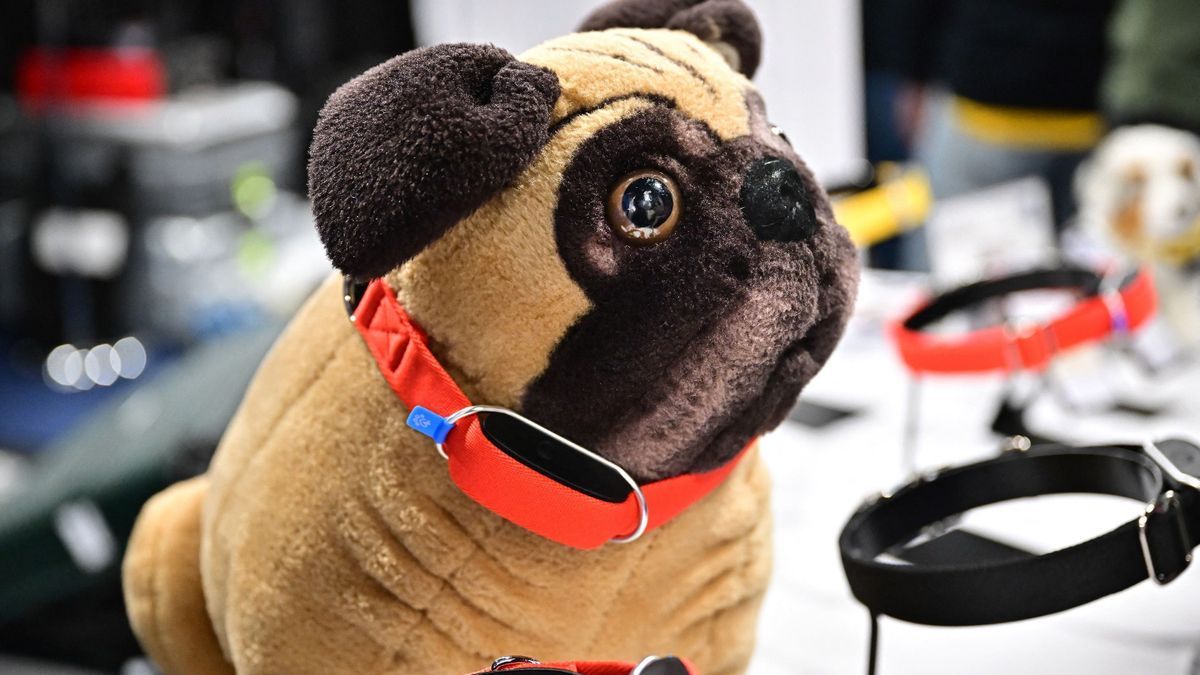
What can a dog do when he is alone at home? Several devices allowing real-time activity monitoring, sometimes with a reading of vital constants, are among the innovations dedicated to animals presented this week at the Las Vegas electronics show.
The Australian startup Ilume has designed a Tracker collar that counts a dog’s steps, as well as its activity time (walking, sleeping, etc.). All connected to its owner’s smartphone.
She has also developed a Smart Bowl, a bowl enhanced with an algorithm that calculates the ideal food portion based on the age, weight and activity of the animal – an object that can be paired with the collar.
The French specialist in GPS devices Invoxia goes further with its connected biometric collar, the Smart Dog Collar. It allows not only to locate the dog in real time but also to list its activity, its possible barking or even its heart and respiratory rate.
Generative AI
This year it is also presenting a miniaturized version, Minitailz, with generative artificial intelligence for cats and dogs of all sizes, which locates the animal, records a lot of health data, knows the difference when the animal walks, runs, scratches, eats, barks, etc., and notices signs like stress. It is presented as the first device to detect cardiac arrhythmia, which is very common in these animals.
The device costs 99 euros and requires an annual subscription of 129 euros. Health is also the objective of the dr.tail application which allows, in its premium version at $19.99 per month, to communicate via written messages with veterinarians all year round, at any time, with a guaranteed response within thirty minutes.
This information could then be used, for example, with the TTcare application from AI for Pet, a company based in South Korea and California.
Thanks to AI, an owner can receive a real-time response from a photo of a visible abnormality in the dog (eye, skin, mouth, paws) or the cat (eye, mouth). And veterinarians can use it as a database.
So much attention for animals which are taking an increasingly important place in homes, generating a flourishing industry.
According to a study by Morgan Stanley published at the end of 2022, the pet market is expected to reach $277 billion in the United States in 2030, compared to $118 billion in 2019.
According to 2023-2024 statistics from the American Pet Products Association (APPA), 66% of American households own at least one animal, or nearly 87 million households.
Numerous scientific studies have concluded for many years that owners of domestic animals are healthier and in particular have less risk of cardiovascular diseases.
Comfort for all
Innovations are also multiplying to ensure the comfort of the animal but also that of its owner.
This is the objective of Whisker with its automatic, self-cleaning, odor-limiting litter robot capable of handling the droppings of four cats. Thanks to a Wi-Fi connection, it informs the owner live of the remaining litter level.
Its competitor Pawbby has developed a self-cleaning litter box, with a deodorizing function, connected to a smartphone to monitor its use by the feline and the animal’s weight. It still costs $699.
Allen Wu, a Chinese information technology engineer for 12 years, created the device after learning that his cat’s illness could have been detected earlier if he had noticed a change in its habits, he said. he explained to AFP.
Whisker also offers a Feeder-Robot, which controls meal times and distributed portions.
With all these inventions, an owner no longer really has any daily stewardship to manage.
And so as not to miss anything new from around the world, PawWire is like a catalog classified by categories on an application and on the internet of products intended for animals, with the possibility of interacting with other users and brands.
